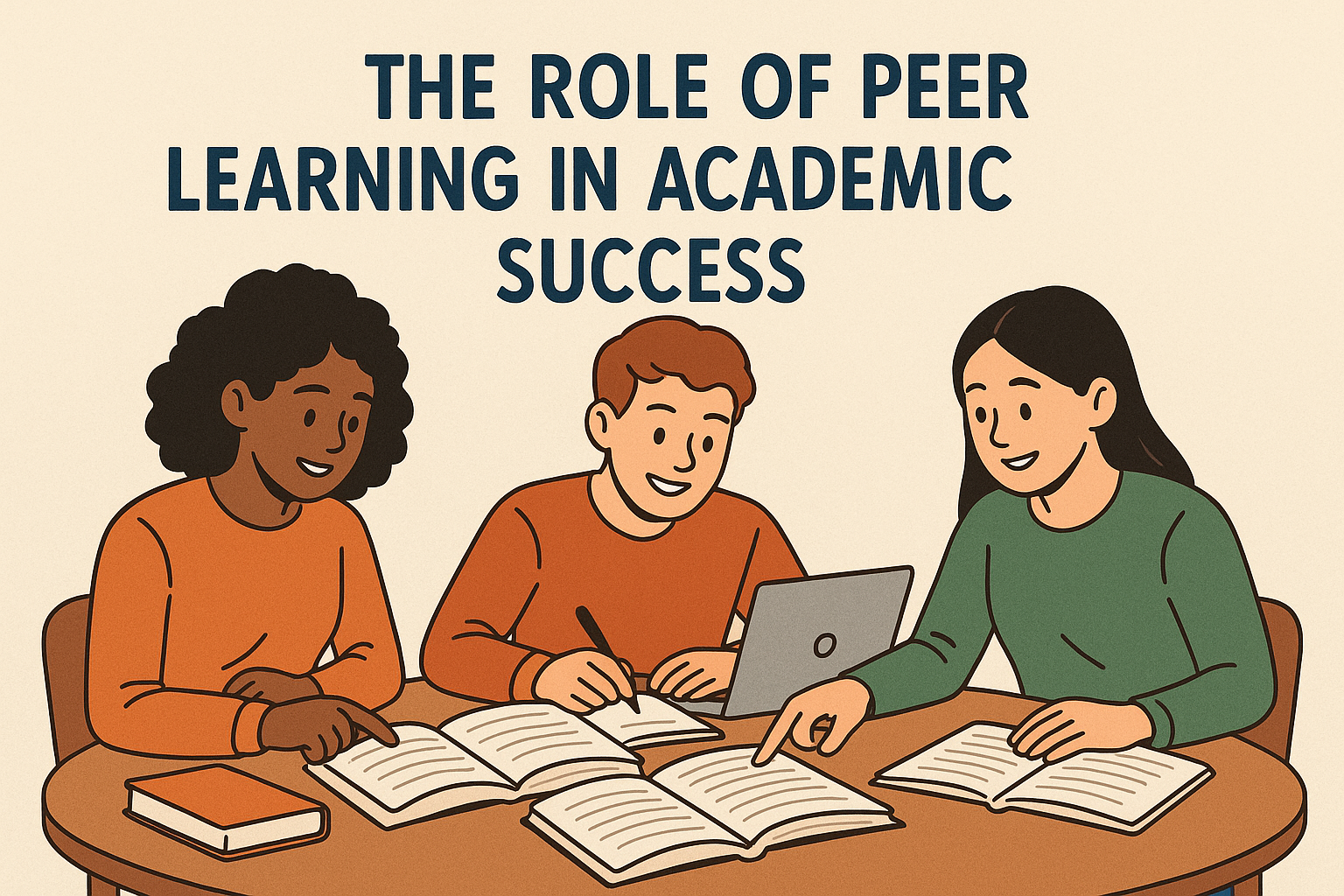


Last updated on: October 8, 2025
11 Views
Yuvika Rathi
College Student

In every classroom, learning doesn’t only come from textbooks or teachers — it also comes from peers. Peer learning, or learning through collaboration and shared understanding among students, is increasingly recognized as one of the most effective ways to build knowledge, deepen comprehension, and enhance critical thinking.
From group discussions to study circles and peer tutoring programs, peer learning enables students to explain ideas, ask questions, and solve problems together — all while developing the 21st-century skills of teamwork, leadership, and empathy.
In this article, we’ll explore how peer learning actually works, why it improves academic success, its different forms, scientific evidence behind it, and how students and educators can implement it effectively.
Peer learning refers to an educational approach where students learn with and from each other through discussion, teaching, and feedback. Instead of a one-way flow of information (teacher → student), peer learning makes education interactive, participatory, and reflective.
It can happen:
Essentially, peer learning is about students becoming active participants in the learning process rather than passive recipients.
Research across education and psychology shows that teaching and explaining ideas strengthen memory and understanding. This is often called the “protégé effect” — when students teach others, they retain and comprehend information better themselves.
Studies from universities like Stanford and Harvard highlight several key cognitive benefits:
Thus, peer learning isn’t just “group work” — it’s a scientifically backed strategy to enhance active learning and critical reasoning.
There are multiple approaches schools and colleges can adopt. Here are the most effective ones:
In peer tutoring, a more knowledgeable or experienced student helps another student understand a subject.
Example: Senior students mentoring juniors in mathematics or coding labs.
Benefits: Personalized instruction, improved academic confidence, stronger communication skills.
Small groups solve problems, discuss topics, or complete assignments together.
Example: Project-based learning where students divide research, share insights, and present findings as a team.
Benefits: Critical thinking, leadership, cooperation, real-world teamwork simulation.
Each student takes turns being the “teacher” to explain concepts.
Example: In a biology class, each student explains one system of the human body to others.
Benefits: Reinforces understanding, encourages speaking skills, and builds subject mastery.
Informal gatherings where students discuss lectures, revise topics, and prepare for exams.
Example: Friends meeting weekly to quiz each other before finals.
Benefits: Reduced exam anxiety, better retention, mutual support network.
Students review each other’s assignments or presentations.
Benefits: Develops analytical judgment, attention to detail, and constructive communication.
Let’s explore exactly how learning with peers leads to improved academic outcomes.
When students teach or explain a topic, they’re forced to organize their thoughts and simplify ideas — a key to real understanding. According to cognitive science, explaining content aloud activates both comprehension and retrieval pathways in the brain.
Peer discussions help students express themselves clearly, listen actively, and collaborate respectfully. These communication skills directly impact success in future careers and higher studies.
Unlike traditional lectures, peer learning encourages questioning, debate, and problem-solving — helping students approach knowledge from multiple perspectives.
Peers relate to each other’s struggles better than teachers sometimes can. This emotional and academic support builds a sense of belonging, which enhances motivation and persistence.
Multiple studies have found that students engaged in peer learning score 10–15% higher on average compared to those studying alone. Confidence also rises as students receive validation and recognition from peers.
While peer learning is powerful, it’s not without challenges:
| Challenge | Common Issue | Effective Solution |
| Unequal participation | Some students dominate discussions while others stay silent | Assign rotating roles — leader, note-taker, presenter, researcher |
| Misinformation risk | Peers may reinforce incorrect concepts | Combine peer learning with teacher supervision or verification stage |
| Group conflicts | Disagreements or lack of coordination | Set clear norms, encourage respect and empathy |
| Assessment difficulty | Teachers may struggle to grade individual performance | Use mixed evaluation: self + peer + teacher feedback |
When guided properly, these challenges can be turned into opportunities to build stronger communication and leadership habits.
Peer learning improves engagement and helps weaker students catch up without fear. Many Indian and international schools now use buddy systems, peer-assisted reading, and study circles to boost classroom inclusivity.
Collaborative projects, lab partnerships, and online forums enable students to apply concepts in real contexts — preparing them for interdisciplinary research and workplace collaboration.
Digital platforms like Google Classroom, Discord, and Notion support peer discussion, file sharing, and group problem-solving — bridging the isolation of remote education.
As education becomes more learner-centered, peer learning will form the backbone of modern classrooms. AI-driven platforms and social learning networks already encourage students to discuss, co-create, and share solutions globally.
Future learning ecosystems will combine human collaboration + digital intelligence, making peer learning not just a technique but a central philosophy of lifelong learning.
Peer learning transforms education from a competitive race into a shared journey of growth. It strengthens understanding, boosts confidence, builds empathy, and prepares students for real-world teamwork.
Whether in a classroom, college, or online space, learning through peers is one of the most effective, human-centered ways to achieve academic success. As the saying goes:
“If you want to go fast, go alone. If you want to go far, go together.”